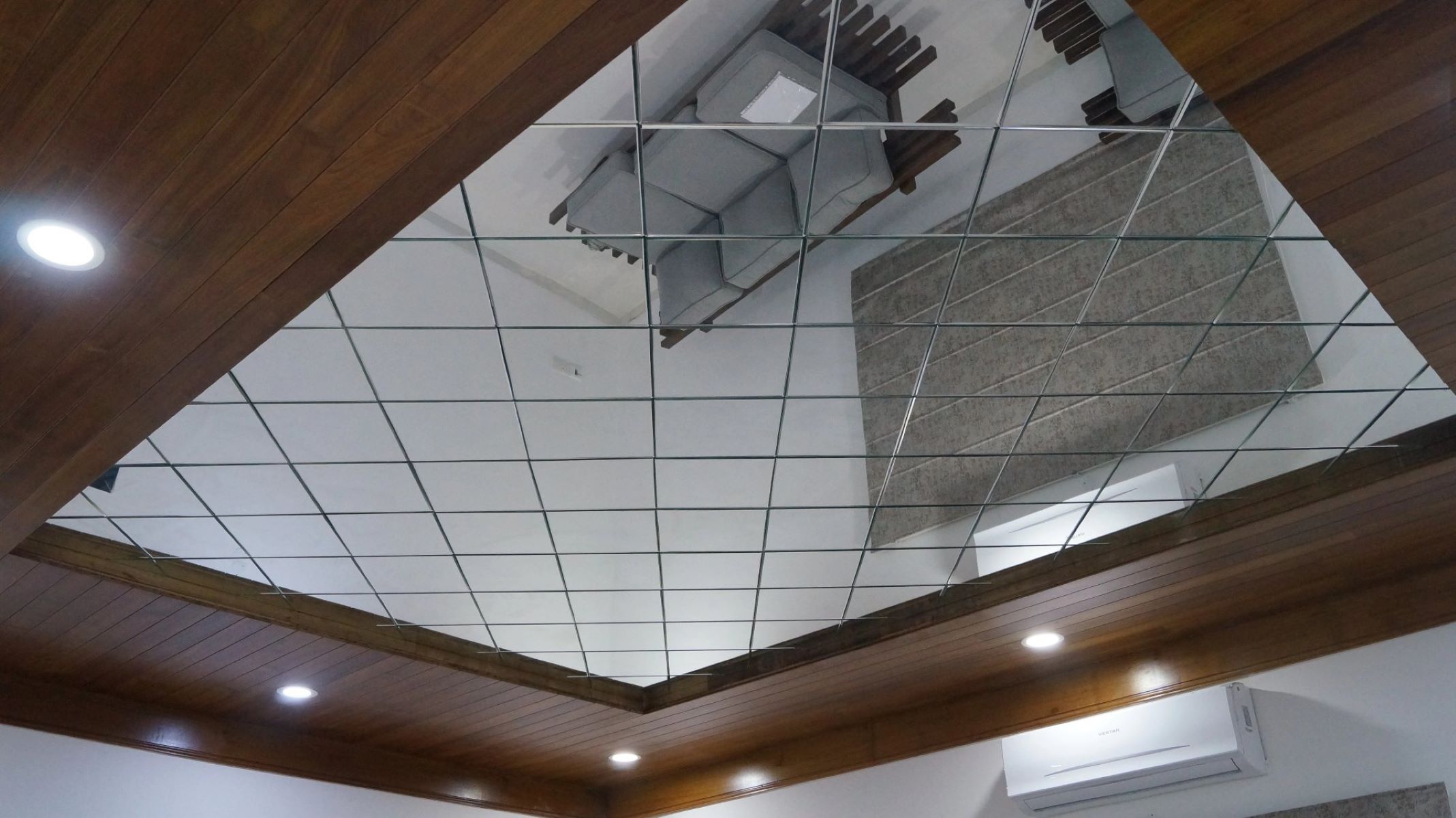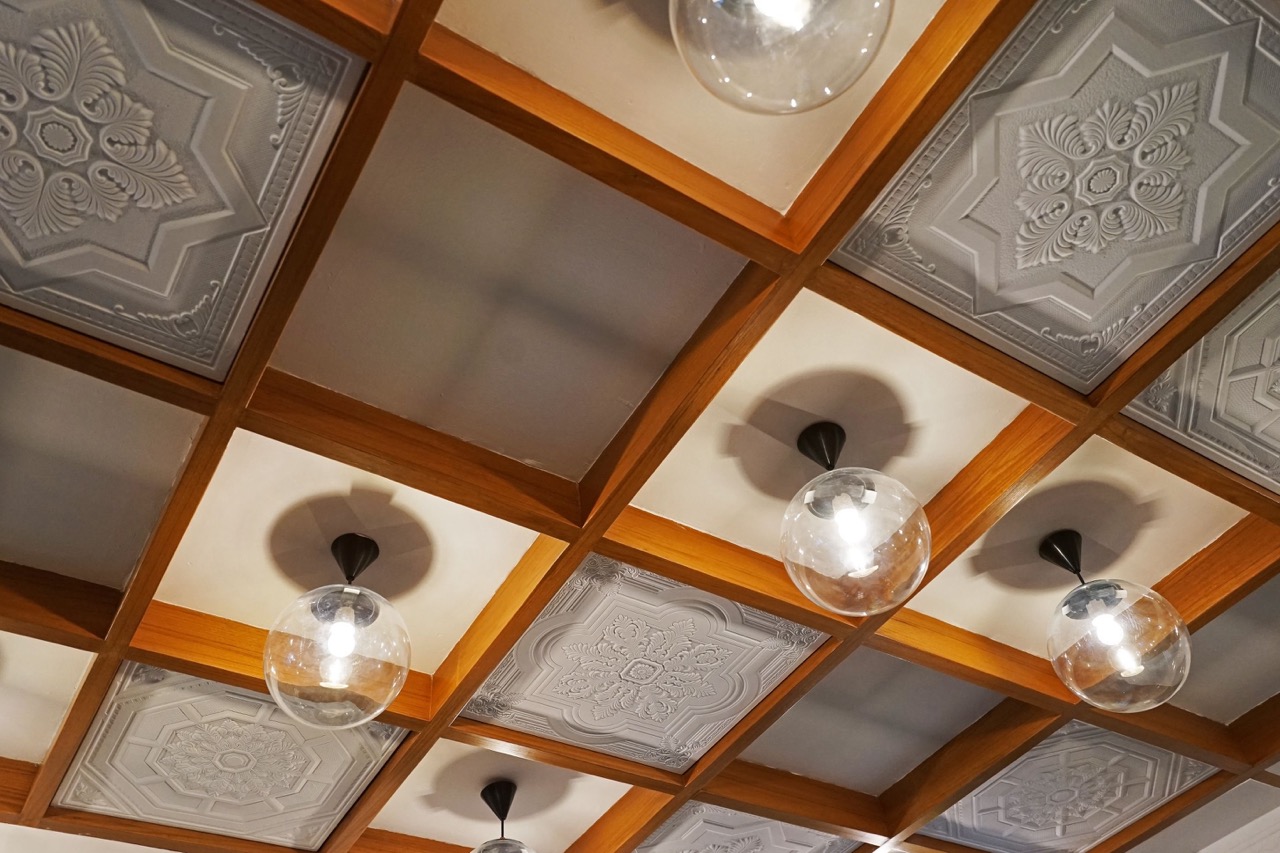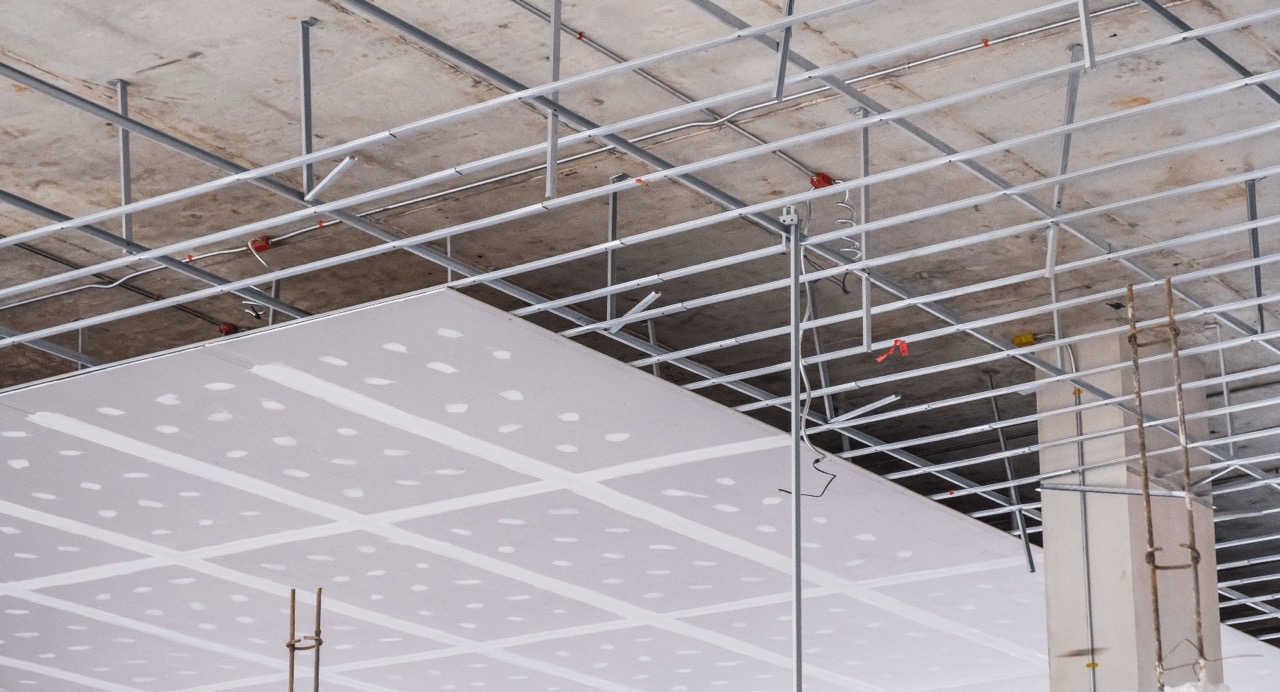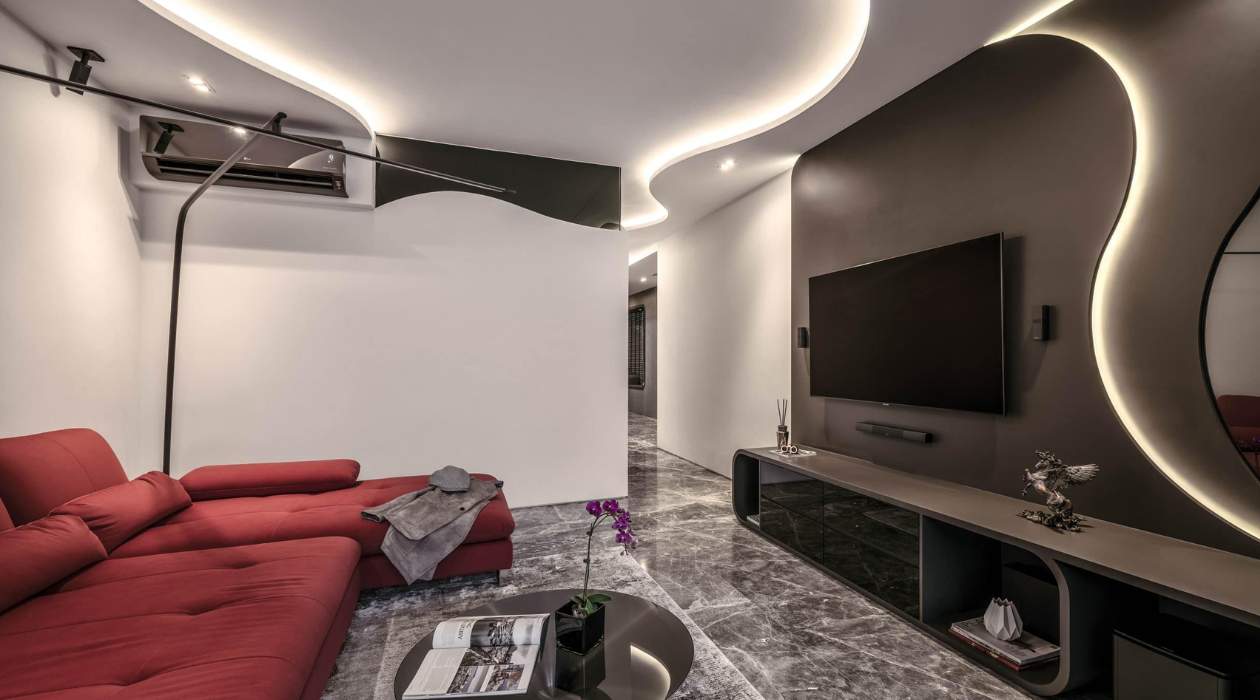Home>Furniture & Design>Interior Design Trends>What Is A Glass Ceiling


Interior Design Trends
What Is A Glass Ceiling
Modified: March 26, 2024
Discover the latest interior design trends and break through the glass ceiling with innovative ideas for your home. Stay ahead of the curve with our expert insights.
(Many of the links in this article redirect to a specific reviewed product. Your purchase of these products through affiliate links helps to generate commission for Storables.com, at no extra cost. Learn more)
Introduction
The concept of a glass ceiling has long been a topic of discussion and debate in various professional and societal contexts. This invisible, yet formidable barrier has hindered the progress of individuals, particularly women and minorities, in their career advancement and attainment of top leadership positions. Understanding the intricacies of the glass ceiling is crucial in addressing the systemic challenges it presents and striving for a more equitable and inclusive society.
The glass ceiling represents an intangible barrier that prevents certain individuals from reaching the upper echelons of their professions, despite possessing the requisite skills, qualifications, and ambition. It is a metaphorical construct that encapsulates the pervasive obstacles and biases that impede the upward mobility of qualified and talented individuals, often based on factors such as gender, race, ethnicity, or other forms of identity.
This phenomenon is not confined to a specific industry or geographical location; rather, it permeates various sectors and is a global concern. The ramifications of the glass ceiling extend beyond the professional realm, influencing societal perceptions and reinforcing entrenched stereotypes. By delving into the complexities of the glass ceiling, we can gain insight into the systemic inequalities that persist in workplaces and broader social structures.
As we explore the multifaceted nature of the glass ceiling, it becomes evident that dismantling this barrier is essential for fostering diversity, equity, and inclusion. By acknowledging its existence and understanding its impact, we can work towards creating environments that empower individuals to ascend to leadership roles based on merit and capability, rather than being hindered by arbitrary limitations.
In the subsequent sections, we will delve deeper into the definition, historical context, causes, effects, and strategies for overcoming the glass ceiling. By examining these facets, we aim to shed light on the pervasive nature of this barrier and explore actionable steps towards fostering a more equitable and meritocratic society.
Key Takeaways:
- The glass ceiling is an invisible barrier that stops some people, like women and minorities, from reaching top jobs. It’s like a see-through limit that needs to be broken for a fair and equal society.
- The glass ceiling causes problems like limited career growth, less diversity in leadership, and reinforcing unfair stereotypes. To fix it, we need fair policies, mentorship, and a culture that values everyone’s contributions.
Read more: What Is A Glass Ceiling
Definition of Glass Ceiling
The term "glass ceiling" encapsulates an invisible yet formidable barrier that impedes the career progression of individuals, particularly women and minorities, preventing them from reaching upper-level positions within organizations. This metaphorical construct symbolizes the intangible hurdles and biases that hinder the upward mobility of qualified and talented individuals, often based on factors such as gender, race, ethnicity, or other forms of identity.
The glass ceiling is characterized by its elusive nature, as it operates beyond explicit policies or overt discrimination. Instead, it manifests through subtle yet pervasive obstacles that hinder the advancement of underrepresented groups, creating a palpable sense of limitation and disparity. This barrier is akin to an impermeable ceiling, obstructing the ascent of deserving individuals to top leadership roles, despite their competence, qualifications, and aspirations.
Furthermore, the glass ceiling is not confined to a specific industry or sector; rather, it permeates diverse professional domains, including corporate, academic, governmental, and nonprofit settings. Its impact reverberates across various organizational structures, impeding the progress of individuals and perpetuating systemic inequalities.
At its core, the glass ceiling represents a systemic issue rooted in deeply ingrained societal norms, biases, and power dynamics. It reflects the intersection of gender, race, and other identity-based disparities, underscoring the complex interplay of factors that contribute to the marginalization of certain groups within professional environments.
Moreover, the glass ceiling extends beyond individual experiences, shaping broader perceptions and reinforcing stereotypes about leadership and capability. Its presence underscores the need to critically examine organizational cultures, policies, and practices to dismantle the barriers that hinder the advancement of underrepresented groups.
In essence, the glass ceiling serves as a poignant symbol of the systemic challenges that impede the equitable progression of individuals within professional spheres. By acknowledging its existence and understanding its implications, we can strive towards creating inclusive environments that foster the advancement of all individuals based on merit, competence, and potential, transcending the limitations imposed by this pervasive barrier.
History of Glass Ceiling
The historical roots of the glass ceiling can be traced back to the early 20th century, coinciding with the gradual entry of women into the workforce amid evolving social and economic dynamics. During this period, traditional gender roles and societal expectations relegated women to predominantly domestic spheres, limiting their opportunities for professional advancement. As women began to pursue careers outside the home, they encountered systemic barriers that hindered their progress within organizational hierarchies.
The concept of the glass ceiling gained prominence in the 1980s, as researchers and advocates sought to elucidate the pervasive obstacles faced by women and minorities in ascending to leadership roles. This era witnessed a growing awareness of gender disparities in the workplace, prompting extensive discourse on the systemic biases and structural impediments that perpetuated inequality.
Historical milestones, such as the passage of the Civil Rights Act of 1964 in the United States, marked a pivotal juncture in the recognition of discriminatory practices within employment settings. Despite legislative efforts to address workplace inequality, the prevalence of the glass ceiling persisted, underscoring the entrenched nature of systemic barriers that hindered the advancement of underrepresented groups.
Throughout the latter half of the 20th century and into the 21st century, advocacy initiatives, research studies, and organizational assessments shed light on the enduring impact of the glass ceiling on professional trajectories. These efforts underscored the intersectional nature of the glass ceiling, acknowledging the compounded challenges faced by individuals at the nexus of gender, race, ethnicity, and other identity-based factors.
The historical trajectory of the glass ceiling reflects a continuum of advocacy, awareness-building, and policy interventions aimed at dismantling systemic barriers to career advancement. While progress has been made in raising consciousness about the pervasive nature of the glass ceiling, its historical evolution underscores the enduring challenges in fostering inclusive and equitable professional environments.
As we reflect on the historical underpinnings of the glass ceiling, it becomes evident that addressing this systemic barrier requires sustained commitment to challenging entrenched norms, fostering diversity, and cultivating inclusive leadership practices. By acknowledging the historical context of the glass ceiling, we can glean insights into the complexities of workplace inequality and chart a path towards meaningful change and progress.
Causes of Glass Ceiling
The causes of the glass ceiling are multifaceted, stemming from a complex interplay of societal, organizational, and individual factors that collectively perpetuate barriers to career advancement. Understanding these underlying causes is essential in addressing the systemic nature of the glass ceiling and implementing targeted strategies to foster inclusive and equitable professional environments.
-
Implicit Bias and Stereotypes: Deeply ingrained societal biases and stereotypes contribute to the perpetuation of the glass ceiling. Preconceived notions about leadership capabilities based on gender, race, or other identity markers shape decision-making processes within organizations, leading to the undervaluing of certain individuals' potential for advancement.
-
Lack of Representation in Leadership: The underrepresentation of women and minorities in top leadership positions reinforces the glass ceiling. When individuals from underrepresented groups do not see themselves reflected in leadership roles, it perpetuates a cycle of limited opportunities and hinders the development of diverse talent pipelines.
-
Unequal Access to Opportunities: Disparities in access to career-enhancing opportunities, such as mentorship, high-visibility projects, and professional development initiatives, contribute to the perpetuation of the glass ceiling. When certain individuals are systematically excluded from these avenues for advancement, it impedes their ability to progress within organizational hierarchies.
-
Organizational Culture and Practices: The prevailing organizational culture and practices, including biased performance evaluations, lack of transparency in promotion processes, and inequitable compensation structures, reinforce the glass ceiling. These systemic factors perpetuate disparities in career progression and hinder the advancement of qualified individuals.
-
Work-Life Balance Challenges: The intersection of work-life balance challenges, particularly for women, contributes to the perpetuation of the glass ceiling. Societal expectations regarding caregiving responsibilities often place additional burdens on women, impacting their ability to pursue career advancement opportunities on par with their male counterparts.
-
Institutionalized Discrimination: Historical patterns of discrimination and exclusion within organizational systems contribute to the perpetuation of the glass ceiling. Lingering institutional biases and discriminatory practices perpetuate barriers to advancement, particularly for individuals from marginalized groups.
Addressing the causes of the glass ceiling necessitates a comprehensive approach that encompasses organizational policy reforms, cultural shifts, and concerted efforts to challenge implicit biases and stereotypes. By recognizing and actively mitigating these underlying causes, organizations can work towards fostering inclusive, meritocratic environments that enable all individuals to realize their full potential and ascend to leadership roles based on their capabilities and contributions.
Effects of Glass Ceiling
The effects of the glass ceiling reverberate across professional landscapes, permeating organizational cultures, individual career trajectories, and broader societal perceptions. This pervasive barrier engenders a myriad of consequences that hinder the advancement of qualified individuals and perpetuate systemic inequalities within workplaces. By comprehensively examining these effects, we can gain insight into the far-reaching implications of the glass ceiling and its profound impact on individuals and organizations.
Read more: How To Break The Glass Ceiling
Stifled Career Progression
The glass ceiling imposes a palpable limitation on the career progression of individuals, particularly women and minorities, thwarting their ascent to upper-level leadership positions. Qualified professionals encounter barriers that impede their advancement, leading to stagnation in their career trajectories and thwarting their potential to contribute to organizational success at the highest levels.
Diminished Organizational Diversity
The presence of the glass ceiling contributes to diminished diversity within organizational leadership, perpetuating homogeneity and limiting the perspectives and experiences represented at the upper echelons of decision-making. This lack of diversity hinders innovation, creativity, and the ability to effectively address the needs of diverse stakeholders.
Erosion of Employee Morale
The pervasive nature of the glass ceiling erodes employee morale, particularly among individuals who face systemic barriers to advancement. The palpable sense of limitation and inequality can lead to disillusionment, disengagement, and a lack of trust in organizational leadership, impacting overall workplace dynamics and productivity.
Reinforcement of Stereotypes
The existence of the glass ceiling reinforces stereotypes about leadership capabilities based on gender, race, or other identity markers. This perpetuation of biased perceptions contributes to the entrenchment of societal norms that undermine the potential of individuals from underrepresented groups, shaping broader attitudes towards leadership and professional achievement.
Read more: What Is A Ceiling
Economic Implications
The glass ceiling engenders economic implications, as the underrepresentation of women and minorities in top leadership roles perpetuates wage disparities and limits the realization of diverse talent pools. This systemic inequality hinders the maximization of human capital and constrains the economic potential of organizations and societies at large.
Impeded Organizational Growth
The glass ceiling impedes organizational growth by limiting the full utilization of talent and expertise. When qualified individuals are hindered in their career progression, organizations miss out on the diverse perspectives, innovative ideas, and leadership acumen that are essential for driving sustainable growth and success.
Undermined Workplace Equity
The presence of the glass ceiling undermines workplace equity, perpetuating disparities in opportunities, recognition, and advancement. This systemic inequality erodes the foundation of meritocracy and fairness, hindering the creation of inclusive environments where individuals can thrive based on their capabilities and contributions.
In essence, the effects of the glass ceiling are far-reaching, impacting individuals, organizations, and broader societal dynamics. By recognizing these effects, we can underscore the imperative of dismantling this pervasive barrier and fostering environments that enable the equitable progression of all individuals based on merit, competence, and potential.
Overcoming the Glass Ceiling
Overcoming the glass ceiling necessitates a concerted and multifaceted approach aimed at dismantling systemic barriers and fostering inclusive, equitable professional environments. This imperative endeavor requires proactive measures at individual, organizational, and societal levels to effect meaningful change and empower individuals to ascend to leadership roles based on merit and capability.
Organizational Policy Reforms
Organizations must prioritize policy reforms aimed at mitigating the impact of the glass ceiling. This includes implementing transparent promotion processes, equitable compensation structures, and initiatives to address implicit biases in decision-making. By fostering a culture of fairness and meritocracy, organizations can create pathways for the advancement of all individuals, irrespective of gender, race, or other identity markers.
Leadership Development and Mentorship Programs
Investing in leadership development and mentorship programs is essential for cultivating diverse talent pipelines and preparing individuals from underrepresented groups for leadership roles. Providing access to mentorship, skill-building opportunities, and executive coaching can empower aspiring leaders to navigate the complexities of organizational hierarchies and overcome barriers to advancement.
Diversity and Inclusion Initiatives
Organizations must prioritize diversity and inclusion initiatives that go beyond symbolic gestures, fostering a culture of belonging and equity. This entails creating affinity groups, fostering inclusive leadership practices, and actively addressing systemic biases to create environments where all individuals feel valued and empowered to contribute to their fullest potential.
Advocacy and Awareness-Building
Advocacy efforts aimed at raising awareness about the pervasive nature of the glass ceiling are instrumental in driving systemic change. By amplifying the voices of individuals impacted by systemic barriers and advocating for policy reforms, organizations and advocacy groups can catalyze meaningful progress towards dismantling the glass ceiling and fostering inclusive workplaces.
Read more: What Is A Coffered Ceiling
Accountability and Measurement
Establishing mechanisms for accountability and measurement is crucial for tracking progress in overcoming the glass ceiling. This involves setting clear diversity and inclusion metrics, conducting regular assessments of organizational practices, and holding leadership accountable for fostering equitable environments where all individuals have opportunities to thrive and advance.
Cultural Transformation
Cultural transformation within organizations is pivotal in challenging entrenched norms and fostering inclusive environments. This entails challenging traditional notions of leadership, promoting diverse role models, and creating a culture that celebrates the contributions of individuals from all backgrounds, thereby dismantling the systemic barriers that perpetuate the glass ceiling.
By embracing these strategies and committing to sustained efforts, organizations can work towards overcoming the glass ceiling and fostering environments where all individuals have the opportunity to ascend to leadership roles based on their capabilities, potential, and contributions. This collective endeavor is essential for realizing the full potential of diverse talent and fostering inclusive, equitable professional landscapes.
Conclusion
In conclusion, the glass ceiling represents a pervasive and formidable barrier that hinders the career progression of individuals, particularly women and minorities, within professional environments. This intangible yet palpable limitation underscores the systemic inequalities that persist in workplaces, perpetuating disparities in leadership representation and hindering the full realization of diverse talent and expertise. The multifaceted nature of the glass ceiling, rooted in implicit biases, historical inequities, and organizational practices, necessitates a comprehensive approach to dismantling this barrier and fostering inclusive, equitable environments.
Addressing the glass ceiling requires a concerted effort at individual, organizational, and societal levels. By implementing transparent promotion processes, equitable compensation structures, and initiatives to address implicit biases, organizations can create pathways for the advancement of all individuals, irrespective of gender, race, or other identity markers. Investing in leadership development and mentorship programs is essential for cultivating diverse talent pipelines and preparing individuals from underrepresented groups for leadership roles.
Moreover, prioritizing diversity and inclusion initiatives, advocacy efforts, and cultural transformation within organizations is pivotal in challenging entrenched norms and fostering inclusive environments. By embracing these strategies and committing to sustained efforts, organizations can work towards overcoming the glass ceiling and fostering environments where all individuals have the opportunity to ascend to leadership roles based on their capabilities, potential, and contributions.
The effects of the glass ceiling are far-reaching, impacting individuals, organizations, and broader societal dynamics. By recognizing these effects, we can underscore the imperative of dismantling this pervasive barrier and fostering environments that enable the equitable progression of all individuals based on merit, competence, and potential. Overcoming the glass ceiling is not only a moral imperative but also a strategic necessity for organizations seeking to leverage the full spectrum of talent and perspectives for sustainable growth and success.
In essence, by acknowledging the historical context, causes, effects, and strategies for overcoming the glass ceiling, we can strive towards creating inclusive, meritocratic environments that enable all individuals to realize their full potential and ascend to leadership roles based on their capabilities and contributions. This collective endeavor is essential for fostering diversity, equity, and inclusion, transcending the limitations imposed by the glass ceiling, and striving for a more equitable and inclusive society.
Frequently Asked Questions about What Is A Glass Ceiling
Was this page helpful?
At Storables.com, we guarantee accurate and reliable information. Our content, validated by Expert Board Contributors, is crafted following stringent Editorial Policies. We're committed to providing you with well-researched, expert-backed insights for all your informational needs.












0 thoughts on “What Is A Glass Ceiling”